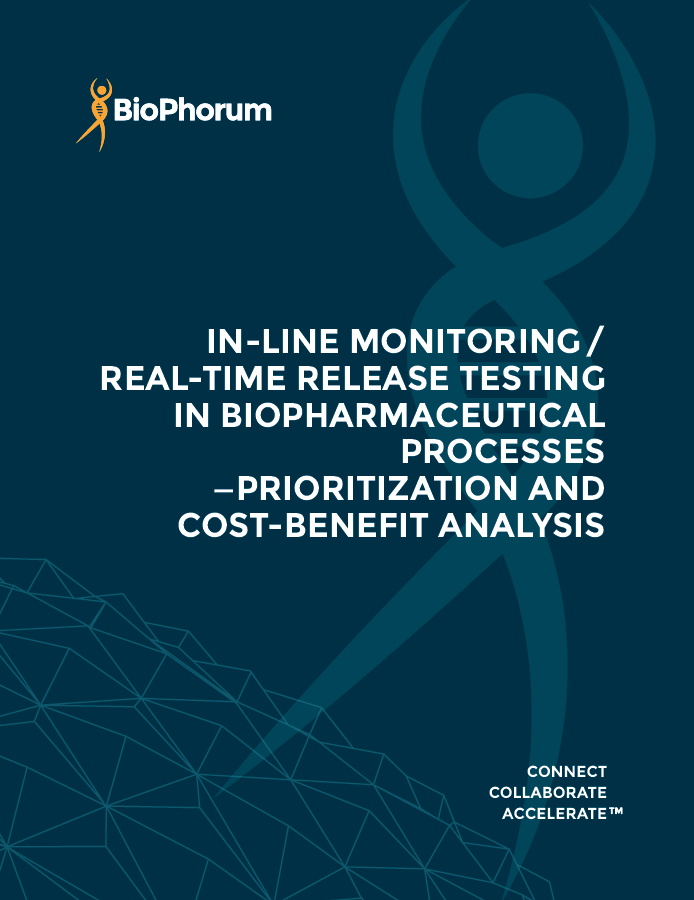Let’s recognize the tremendous efforts by people in the Life Sciences industry racing for solutions to COVID-19 Coronavirus treatments and vaccines. In an unprecedented way, many are scaling up for full production while still in the early phases of development. We’re all hoping that one or several treatments will work in helping wind down this challenging era.
Over the years, pharmaceutical and biopharmaceutical manufacturers have been incorporating in-line monitoring and real-time release testing to improve the efficiency and reliability to meet the extremely high-quality standards for the therapies they produce.
Emerson’s Michalle Adkins pointed me to some work from the BioPhorum organization. Their mission is to:
…create an environment where the global biopharmaceutical industry can collaborate and accelerate their rate of progress, for the benefit of all.
To accomplish this mission, their strategy is:
- Bringing leaders together to create future visions that focus the industry’s energy on the key emerging opportunities
- Mobilizing communities of the top experts around these opportunities, up and down the biopharma value chain
- Creating partnerships that enable change and provide the quickest route to implementation and results
- Replacing isolation with collaboration so that the industry shares, learns and builds the best solutions together
 Emerson is a member of this organization. Michalle, who participates in several of the workstreams, alerted me to this work, In-line monitoring / real-time release testing in biopharmaceutical processes – prioritization and cost benefit analysis. You need to register (no cost) to download this and other works by the BioPhorum members.
Emerson is a member of this organization. Michalle, who participates in several of the workstreams, alerted me to this work, In-line monitoring / real-time release testing in biopharmaceutical processes – prioritization and cost benefit analysis. You need to register (no cost) to download this and other works by the BioPhorum members.
Michalle along with Emerson’s Benjamin Arriola and Brandon Haschke are co-authors joining with experienced professionals from leading biopharmaceutical manufacturers and other suppliers.
The content of this 45-page publication includes an executive summary, introduction, process workflow, user requirements specifications, business case, and a conclusion and path forward. Here’s the introductory two paragraphs in the executive summary to give you a flavor of the expertise shared by the authors and contributors to help each other improve their manufacturing processes.
Biopharmaceutical product development and commercialization has been growing rapidly over the last couple of decades with biopharmaceutical sales equating to roughly 30% of all drug sales in 2018, at a growth rate of twice that of conventional pharmaceuticals1. Biopharmaceuticals are diverse, require multi-step processes for their production, and have a molecular complexity that far exceeds traditional small-molecule drugs. The quality of a biopharmaceutical product is highly dependent on its manufacturing process and control strategy, requiring extensive product and process knowledge, leading to significant development costs of these highly complex products. Drug pricing, reimbursement constraints, volatile investment markets, expanding presence to emerging markets and diverse patient populations along with approval pressure from health authorities and regulatory requirements of each approving market are challenges that the biopharmaceutical industry must strive to address. There is a need to increase speed and reduce cost of development, manufacturing, and commercialization of biopharmaceutical products to balance the significant challenges and promote availability of most needed medicines to patients. At the same time, providing high assurance of product quality and process consistency is of utmost importance.
Significant improvements in quality, consistency, speed of development and cost of biopharmaceutical products can be achieved by adopting quality-by-design (QbD)2,3 principles and focusing process development on product and process understanding and process control to ensure acceptable product quality and process consistency. Important initiatives that go beyond the most basic QbD mindset and toolset to help accomplish this include the use of process analytical technology (PAT)4, real-time release testing (RTRT)5 and automation technologies.
In this race for therapies and vaccines across manufacturers in the Life Sciences, it’s great to see this level of collaboration as one of the elements in developing quicker solutions.
Visit the BioPhorum site to learn more about this organization and the Life Sciences & Medical section on Emerson.com for more on the technologies and solutions to aid in accelerating the rate of progress. You can also connect and interact with other pharmaceutical and biopharmaceutical industry experts in the Life Sciences group in the Emerson Exchange 365 community.



